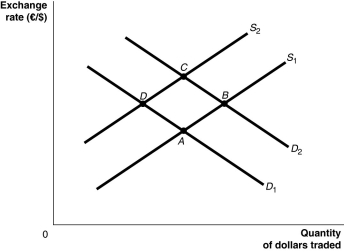Figure 14.1  Alt text for Figure 14.1: In figure 14.1, a graph illustrates the quantity of dollars traded against the exchange rate.
Alt text for Figure 14.1: In figure 14.1, a graph illustrates the quantity of dollars traded against the exchange rate.
Long description for Figure 14.1: The x-axis is labelled, quantity of dollars traded, and the y-axis is labelled, exchange rate, euros against dollars.2 supply curves; S1 and S2, and two demand curves; D1 and D2 are plotted.Supply curve S1 is a straight line which slopes up from the bottom left corner to the top left corner, and passes through points A and B.Supply curve S2 is a straight line with the same slope as S1, but plotted above.S2 passes through points D and C.Demand curve D1 is a straight line, which slopes down from the top left corner to the bottom right corner.Curve D1 intersects curve S1 at point A, and curve S2 at point D.Demand curve D2 is a straight line with the same slope as D1, but plotted above.Curve D2 intersects curve S1 at point B, and curve S2 at point C.
-Refer to Figure 14.1.The appreciation of the euro is represented as a movement from
Definitions:
Standard Deviation
A gauge for the level of deviation or dispersion within a group of quantities.
μ
The symbol used to represent the population mean in statistics.
Frequency Distributions
A statistical tool that organizes data by recording the number of times each value or group of values occurs.
Normal Distributions
A bell-shaped distribution that is symmetric about the mean, showing that data near the mean are more frequent in occurrence than data far from the mean.
Q2: What does it mean when one currency
Q42: Use the following information to draw a
Q80: The central bank of the European Union
Q91: If the public holds rational expectations regarding
Q92: What happens to national saving when the
Q127: A rise in the Canadian dollar price
Q225: If wages and prices adjust slowly,we would
Q236: If Canada has negative net exports,which of
Q241: If actual inflation is less than expected
Q263: Many economists who would normally argue against